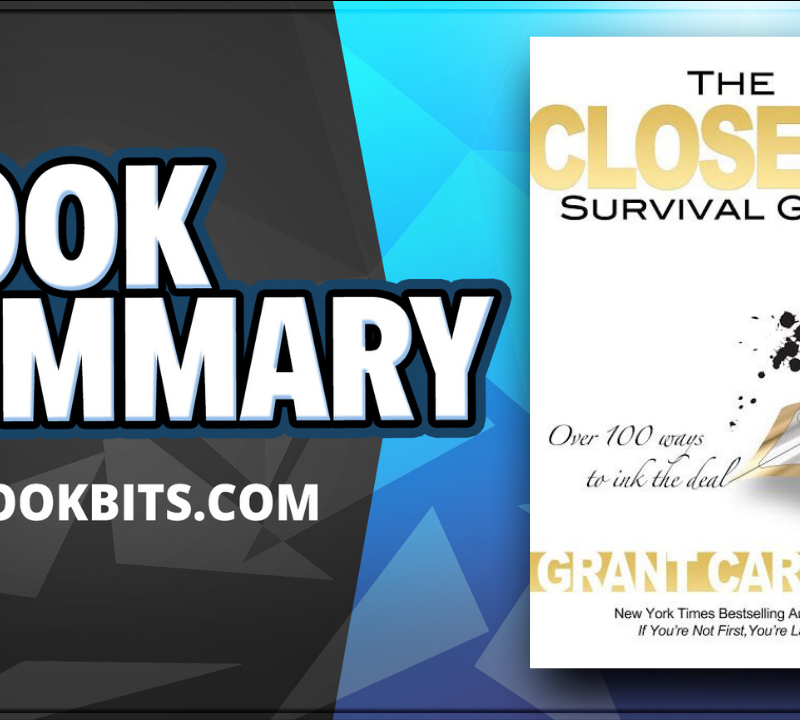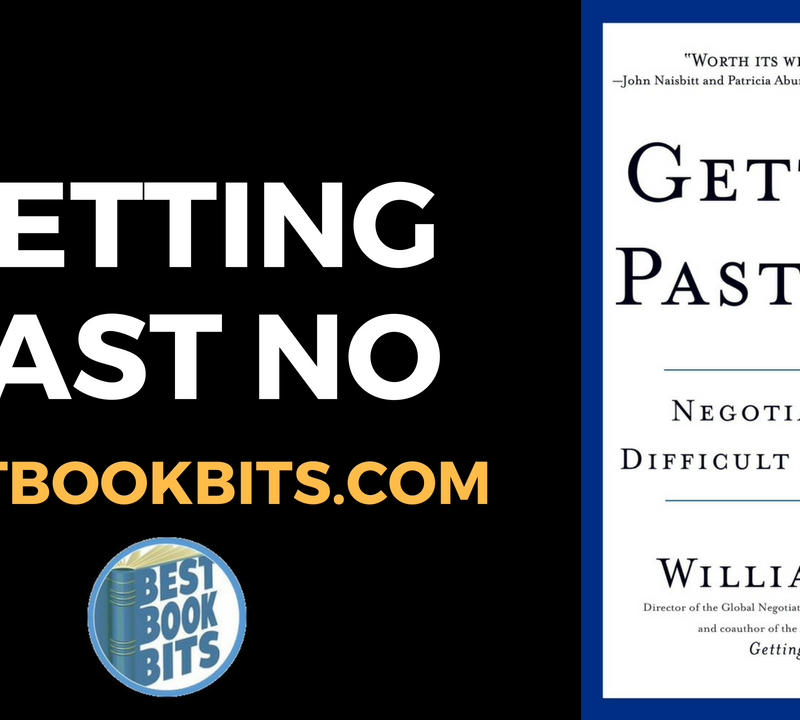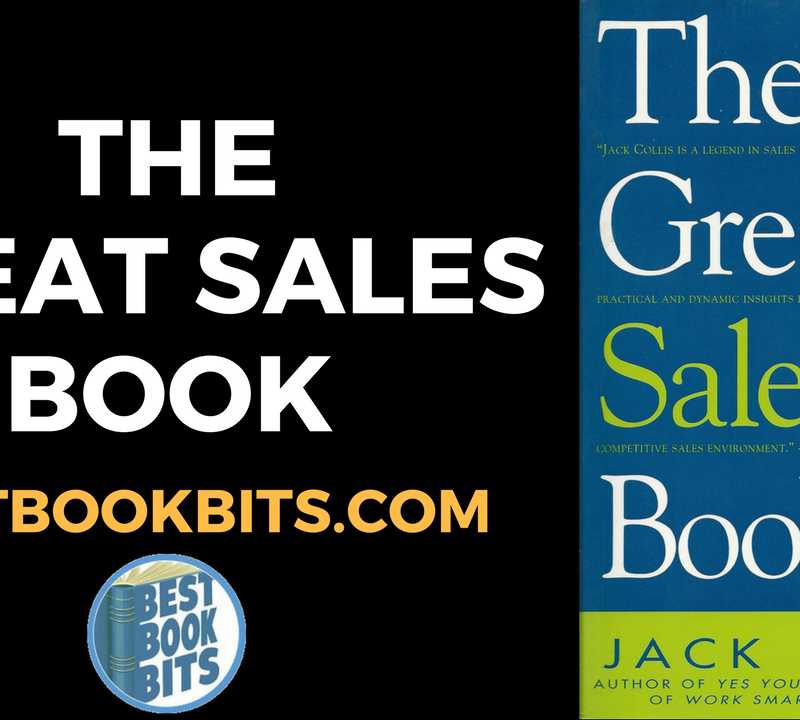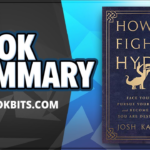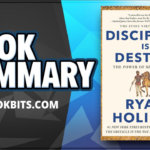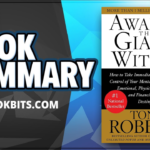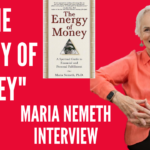★DOWNLOAD THIS FREE PDF SUMMARY HERE
? MY FREE BOOK TO LIVING YOUR DREAM LIFE”
? SPONSOR BESTBOOKBITS BY USING PATREON
? SUPPORT BESTBOOKBITS BY CLICKING THE LINKS BELOW
- 150 PDF Summaries
- Coaching Program
- Subscribe to My Channel
- Website
- Spotify
- Book Club
- Mailing List
- K. Strong contributed to the new idea that selling wasn’t an innate ability. It was a set of identifiable skills that could be learned.
- There have been huge changes to transactional selling as a result of the Internet.
- Purchasing has gone through a major revolution.
- The five distinct profiles of salespeople. The hard worker. The challenger. The relationship builder. The lone wolf. The reactive problem solver.
- Research shows that relationship builders were unlikely to be star performers. In contrast, the Challengers, who are awkward to manage and assertive both with customers and with their own managers, came out on top.
- Conventional wisdom has long held that selling is about relationships and that in complex sales, relationships are the underpinning of all sales success. Yet over the last ten years there have been some disturbing hints that relationship-based selling may be less effective than it used to be.
- When we asked 1,100 customer what they valued in salespeople, we were surprised at how few times they mentioned relationships. It seems that the old advice, “Build relationships first and then sales will follow” no longer holds true.
- The relationship and the purchasing decision have become decoupled.
- I believe that a customer relationship is the result and not the cause of successful selling.
- It is a reward that the salesperson earns by creating customer value. If you help customers think differently and bring them new ideas – which is what the Challenger rep do – then you earn the right to a relationship.
- Surveys of customers consistently show that they put the highest value on salespeople who make them think, who bring new ideas, who find creative and innovative ways to help the customer’s business. Customers demand more depth and expertise. They expect salespeople to teach them things they don’t know.
- How you sell has become more important than what you sell.
- In this world of dramatically changing customer buying behaviour and rapidly diverging sales talent, your sales approach must evolve or you will be left behind.
- The challenger rep is the rep who loves to debate. The one who uses his or her deep understanding of a customer’s business not simply to serve them, but to teach them: to push their thinking and provide them with new and different ways to think about their business and how to compete.
- Six attributes that set Challenger rep’s apart. 1) Offers the customer unique perspectives 2) Has strong two-way communication skills 3) Knows the individual customer’s value drivers 4) Can identify economic drivers of the customer’s business 5) Is comfortable discussing money 6) Can pressure the customer.
- A challenger is really defined by the ability to do three things: teach, tailor, and take control.
- The challenger is focused on pushing the customer out of their comfort zone, the Relationship Builder is focused on being accepted into it.
- The challenger rep wins by maintaining a certain amount of constructive tension across the sale. The relationship Builder, on the other hand strives to resolve or defuse tension, not create it. It’s the exact opposite approach.
- Challenger reps deliver insight that reframes the way customers think about their business and their needs.
- Challenger reps communicate sales messages in the context of the customer.
- Challenger reps seek to leverage constructive tension to their advantage across all dimensions of the sale.
- The Challenger rep doesn’t give in to the request for a 10 percent discount, but brings the conversation back to the overall solution – pushing for agreement on value, rather than price.
- Challengers are also able to challenger customers thinking and pressure the customer’s decision-making cycle – both to reach a decision more quickly as well as the overcome that “indecision inertia” that can cause deals to stall indefinitely.
- You can’t be an effective Challenger if you’re not going to push your customers.
- Discover your customer’s most pressing points of pain and then build a tight connection between what’s keeping them up at night and what you’re seeking to sell.
- It’s not what you sell, it’s how you sell.
- Loyalty is won out in the field, in the trenches, during the sales call. It’s the result of the conversations our reps are having with customers every single day.
- Your ability to outperform the competition in the sales experiences itself with earn you customer loyalty more than anything.
- Customers place a great deal of importance on a smooth, uncomplicated purchase.
- Five attributes that stands out in our loyalty survey. 1) Rep offers unique and valuable perspectives on the market. 2) Rep helps me navigate alternatives. 3) Rep provides ongoing advice or consultation. 4) Rep helps me avoid potential land mines. 5) Rep educated me on new issues and outcomes.
- Customers are saying rather emphatically, “Stop wasting my time. Challenge me. Teach me something new.”
- Quality insight trumps all else. Insight is all about teaching customers new ways of thinking, pushing them to rethink their current perspectives and approaches.
- That’s the real bombshell finding of this work. Loyalty isn’t won in product development centres, in advertisements, or on toll-free help lines: Loyalty is won out in the field, in the trenches, during the sales call. It’s the result of the conversations out reps are having with customers every single day. The entire remainder of customer loyalty – all 53 percent – is attributable to your ability to outperform the competition in the sales experience itself. Over half of customer loyalty is a result not of what you sell, but how you sell. As important as it is to have great products, brand, and service, it’s all for naught if your reps can’t execute out in the field.
- Demonstrate a high level of professionalism.
- Likewise, customers place a great deal of important on a smooth, uncomplicated purchase. No one wants to work with supplier that makes any purchase more complicated than it has to be – especially a solutions purchase.
- Don’t make your customers work so hard to spend their money!
- Instead, what sets the best suppliers apart is not the quality of their products, but the value of their insight – new ideas to help customers either make money or save money in ways they didn’t even know were possible.
- Great questions aren’t enough. You’ve got to have great insights.
- Why should our customers buy from us over anyone else?
- But if your story fails to engage both sides of the brain simultaneously – the rational and the emotional – it’s too easy for your customer to make no decision even over a good decision, as logic alone is rarely enough to overcome the status quo. Disruptive change is as much about following your gut as it is about following your head.
- If you’re going to reframe, then be sure you really reframe. This is not the place to be timid, as the entire approach rest on your ability to surprise your customer and make them curious for more information.
- Talking about the customer’s business in ways that help them boost productivity.
- The best sales conversations present the customer with a compelling story about their business first, teach them something new, and then lead to their differentiators.
- Don’t lead with, lead to. Remember, the real value of the interaction isn’t what you sell; it’s the insight you provide as part of the sales interactions itself.
- Solution selling is customization in the moment.
- The reps’ primary job shifts from discovering needs to guiding a conversation.
- A successful teaching pitch must do four things well. First, it must be big. Done well, it will be seen by the customer as more expansive and farther-reaching than an ordinary idea. Second, it must be innovative. It has to push the envelope with new, often untested and unique approaches. Third, it must be risky. Big ideas mean that we are asking our own companies and our customers to take a big risk in adopting our idea. And lastly, it must be difficult. The idea itself must be hard to do – either because of scale, uncertainty, or politics – otherwise, why would a customer hire you to fix it for them?
- Remember, while Relationship Builders seek to reduce or defuse tension, Challengers constructively use tension to their advantage.
- Customers want to talk about their business, not your solution.
- The single biggest incremental opportunity to drive growth isn’t in the products and services you sell, but in the quality of the insight you deliver as part of the sale itself.
- The biggest driver of end user and influencer loyalty is the rep’s professionalism.
- Customers are simply looking for a professional – someone they can believe, and someone they can trust.
- The best way you sell more stuff over time isn’t by going directly to the person who signs the deal, but by approaching him or her indirectly through stakeholders able to establish more widespread support for your solution.
- Challenger reps aren’t focused on what they are selling, but on what the person they’re speaking to is trying to accomplish.
- The Challenger’s ability to demonstrate and hold firm on value and the ability to maintain momentum across the sales process. Challengers are comfortable discussing money because they are confident in the value they will provide to the customer.
- Challengers also create momentum. Their deals don’t get stuck nearly as often in “no-decision land” the way typical core reps’ deals ten to. This is because a Challenger will push things along, always thinking ahead to the next step.
- Challengers understand that the goal is to sell a deal, not just have a good meeting; they are focused on moving ahead.
- Challengers differentiate themselves by taking control from the start. Customers value this because they see the Challenger as a confident partner in the sales process, not a nervous rep crossing their fingers in the hope of making a sale.
- Relationship Builders will do things that are not in their best interests or in their company’s best interests – for instance, proactively offering a discount when the customer hasn’t even asked for one.
- We find that many sales professionals undervalue their contribution to the customer. They marginalize the tremendous value of their company’s resources – not just technical expertise, but implementation and change management know-how – and overestimate the value of every objection raised by the customer.
- Taking control is all about creating constructive tension – about challenging the way a customer sees their world, and pushing back constructively in tough negotiations.
- Anatomy of a Successful Negotiation. 1) Acknowledge and Defer 2) Deepen and Broaden 3) Explore and Compare 4) Concede According to Plan.
- Reps are encouraged to say something like this, “I understand that price is something we need to address, but before we do, I’d like to take a moment to make sure I completely understand your needs – so we can make sure we’re doing everything we can to make this deal as valuable as possible for you. Is that all right?”
- What are you looking to achieve with a 20 percent price reduction?
- The frontline sales manager in any sales organization is the fundamental link between strategy and execution – this is where change initiatives and sales force transformations live or die.
- Great reps don’t necessarily make great mangers. You can’t just excel at sales to be great sales manager, you’ve also got to excel at management as well.
- In the Army, there’s an old saying that applies equally well to sales: “No plan survives engagement with the enemy.” No matter how carefully one plans for battle, running through every possible scenario of what might happen and what might go wrong, the reality on the field will inevitably be different. As a result, Army leaders have adopted a style of leadership known as Commander’s Intent. Commander’s Intent is just that: a clear, concise statement of the specific goal a commander is looking to achieve.
- Sales innovation is the single biggest sales-related attribute contributing to world-class sales manager performance.
- Sales innovation is the missing link in terms of fully realizing the benefits of the Challenger Selling Model.
- Coaching is behavioural – it’s not just about obtaining skill and knowledge; it’s about demonstrated application of that skills and knowledge.
- Training is good for sharing knowledge. Coaching is about acting upon it. The unique advantages of coaching stem from how it’s tailored to the individual and systematically delivered at the point of need.
- Essentially, what we found is that bad coaching and bad managers make people want to give up. From low-performing reps to our superstars, none of them can be bothered if they don’t feel they’re getting effective coaching from their managers. Coaching quality matters.
- Teaching, tailoring, and taking control.
★DOWNLOAD THIS FREE PDF SUMMARY HERE
? MY FREE BOOK TO LIVING YOUR DREAM LIFE”
? SPONSOR BESTBOOKBITS BY USING PATREON
? SUPPORT BESTBOOKBITS BY CLICKING THE LINKS BELOW


